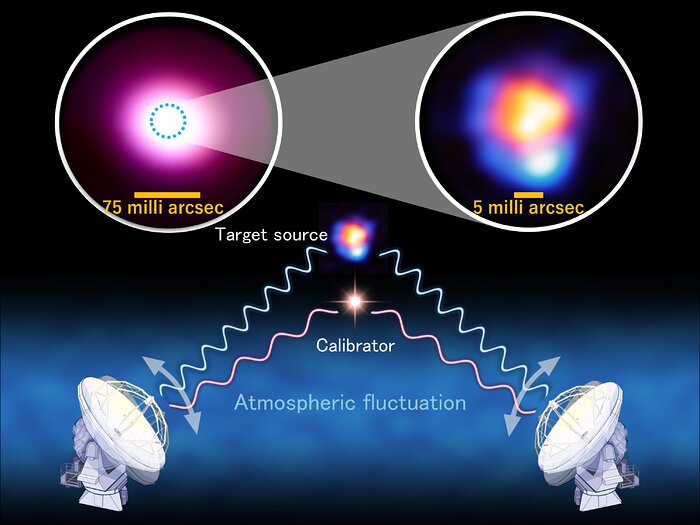Calibration method used to achieve the highest-resolution image with ALMA
In new observations that pushed ALMA capabilities to the extreme, researchers had to develop a new calibration method to obtain the highest-resolution ever image with ALMA. In this so-called band-to-band method, atmospheric fluctuations are compensated for by observing a nearby calibrator in low-frequency radio waves, while the target is observed with high-frequency radio waves. The top right inset image shows the ALMA image of R Leporis that achieved the highest resolution of 5 milli-arcseconds. Submillimeter-wave emission from the stellar surface is shown in orange and hydrogen cyanide maser emissions at 891 GHz are shown in blue. The top left inset image shows a previous observation of the same star using a different array configuration with less distance between the antennas and without the band-to-band method, resulting in a resolution of 75 milli-arcsec. The previous resolution is too coarse to specify the positions of each of the two emission components.
Kredit:ALMA (ESO/NAOJ/NRAO)/Y. Asaki et al.
O snímku
| Id: | ann23019b |
| Typ: | Kresba |
| Datum zveřejnění: | 15. listopadu 2023 7:00 |
| Související oznámení: | ann23019 |
| Velikost: | 3004 x 2254 px |
O objektu
| Jméno: | Atacama Large Millimeter/submillimeter Array |
| Typ: | Unspecified : Technology : Observatory : Telescope |
| Kategorie: | ALMA |
